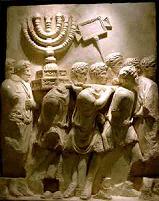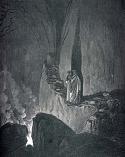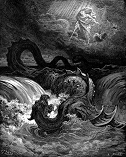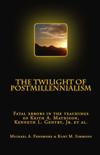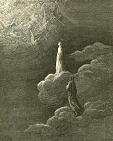Ojections to Transmillennialism
and other Millennium Models
The
millennia of Revelation are an extremely challenging symbol to
understand. The millennial model most popularly embraced by
Preterists today is that of Max King, which states that there is
but one millennium, and that it represents the “transition
period” between the two covenants.
We here offer objections to the model held by the
probable majority of Preterists.
The Transmillennial Model is a Single Millennium Model
King’s model
calls for a single millennial period.
Yet, King himself described two millennia in Revelation
twenty:
“These two one thousand years periods are like the North and South Poles – the distance of the North pole from the equator is also the distance of the south Pole from the equator. The opposite or extreme points, the binding of the Satan and the reigning of the Saints, were reached in the middle of the seventieth week.” (Max R. King, The Spirit of Prophecy (Warren OH, 1971), p. 347
So, King
clearly saw two opposing one thousand years periods in
the text. There is a
thousand year binding of the dragon, and there is a thousand
year reign of the saints, just as unique as the North Pole is
from the South Pole.
King, however, failed to follow up on this observation, and
reverted to the single millennium model, defining the reign of
the saints by the binding of the dragon.
But the single millennium model makes no sense at all.
The dragon is loosed before the general resurrection, to
begin the battle of Gog and Magog (Rev. 20:7-11).
But the reign of the saints – the first resurrection -
does not end until the 2nd, general resurrection when
the souls were delivered from Hades.
Thus, the “thousand year” periods do not match!
The one begins and ends before the other starts.
If they do not match, then they cannot possibly be the
same period, nor can the reign of the saints be defined by the
binding of the dragon.
The Transmillennial Model Makes the Bottomless Pit in Rev. 20 Incongruous with its Usage elsewhere in Revelation
According to
King (which he borrows from Augustine), the keys of the
bottomless pit in Rev. 20 are the cross and gospel of
Christ – Preaching the gospel binds the dragon. It binds
the dragon because when the truth is preached allegedly he
cannot deceive. This of course is not true; the gospel is
preached today, but billions of people are deceived. But
let us assume for purposes of argument that preaching the gospel
somehow binds the dragon. If the keys are the cross and gospel
in chapter 20, what are they in chapter 9? In Chapter Nine
the abomination of desolation rises out of the bottomless
pit when a fallen star or angel who has the keys of the
bottomless pit, releases them. All Preterists agree that
the invasion of the locust army is the Roman invasion of
The angel
who has the keys and releases the locusts in Rev. 9 is said to
be their “king.” Chapter 17says there are seven kings
– five were fallen, one is and another was yet
to come. (Rev. 17:10) The one who “is” when John
wrote was Nero, the 6th emperor. Nero held the
keys of the
Makes Language of Martyrdom Language of Regeneration
The language
of the first resurrection speaks of those martyred under
the dragon and the beast. To make beheading and martyrdom
a symbol for regeneration – for repentance & baptism - is hard
to grasp and stretches the language of the passage further than
it is wont to go. Revelation was written to the church
standing upon the threshold of the eschatological crisis called
the great tribulation, when the church would suffer near
universal martyrdom. The point of the imagery is to
comfort the church by assuring them God had prepared a place of
rest for them pending the general resurrection. Paul spoke
to this same issue in I Thess. 4:13, when he said he would not
have the Thessalonians ignorant concerning them that had fallen
asleep, that “ye sorrow not, even as other which have no hope.”
Likewise, Rev. 14:13 pronounces a blessing upon those that would
suffer martyrdom under the beast, saying, “Blessed are the dead
which die in the Lord from henceforth: Yea, saith the Spirit,
that they may rest from their labours; and their works do follow
them.” Those that died in the Lord are the same as those
portrayed living and reigning with Christ in Rev. 20:3-6.
It is nonsensical to say that Rev. 20 is describing
regeneration.
Applies Language and Time-Models of the Spiritual Realm to Earth
The
symbolism of the dragon being bound in the “bottomless pit” is
universally agreed to represent Hades Tartarus or Hell.
I know of no one who contradicts this.
Thus, all concur that Hades or Hell is in view in Rev.
20:1-3. It is an
undeniable fact that Greeks and Romans believed that the souls
in Hades were raised/born anew after 1,000 years, which
corroborates this view.
Thus, the 1,000 years speak to the time during which the
dragon was “dead” in Hades Tartarus.
Similarly, the souls under the altar in v. 4 are almost
universally agreed to be in the spiritual realm, or interim
place of the dead.
No one went to heaven (except Christ) before the general
resurrection. Hence,
Hades Paradise is the ONLY place these souls can be.
Since, it is an undeniable fact that the Greeks and
Romans believed souls were in Hades 1,000 years, this
interpretation is fully corroborated.
The whole chapter is thus involved in the resurrection
from Hades. The
dragon was symbolically bound in Hades Tartarus and would rise
again to persecute the church. The souls of the martyrs are in
Hades Paradise and will rise from there at the general
resurrection depicted in vv. 11-15.
Despite the
overarching theme of “resurrection from Hades” that pervades the
chapter, the Transmillennial view imports living saints into the
text. It says that
some of those depicted in v. 4 are actually the church on
earth.
Proponents of this view point to language of regeneration in
passages like Eph. 2:1, 2, 6, in which those “dead in sins” are
“raised up” and made to “sit together” with Christ in heavenly
places. The problem
with applying this language to Rev. 20:4 is that Ephesians
places those “raised up” in heaven, not Hades (Eph.
Transmillennial Model Assumes the Dragon is a Supernatural, Demonic Being
Augustinian
Postmillennialism and King’s Transmillennialism both assume that
the dragon of Reveleation is a supernatural, semi-omnipotent,
omnipresent, demonic being.
Yet, Revelation is a book of symbols. The dragon in
Revelation is not a demonic being, but Leviathan, a symbol for
the world civil power at war with Christ and his church.
In the OT the dragon variously symbolized
The Saints do not Start Reigning until the Dragon is Loosed
This is the most obvious error of the traditional interpretation. A prisoner bound in prison cannot attack or harm those outside. Thus, in order for the martyrs to come under attack and die, the dragon must first be loosed! This clearly prevents the reign of the martyrs from being simultaneous with the binding of the dragon. The better view, therefore, is that it is at the point where the dragon is loosed that the persecution under Nero began and the martyrs died and thus entered into their 1,000-year Hadean reign. The dragon and beast received a mortal wound in the persecution that collapsed in chapter twelve. They went to Hades Tartarus (symbolically) where they were bound until the time the wound healed, and they revived to persecute the church anew under Nero. Those beheaded for not receiving the mark of the beast are those that die under Nero’s persecution, which means that their reign follows the loosing of the dragon.
The Transmillennial Model Assumes Facts not in Evidence
Rabbinic Teaching Not Source of Millennial Imagery
The saints
in Rev. 20:4 are dead; they are martyrs in Hades where they are
waiting the general resurrection.
They are victorious in death and thus live and reign with
Christ for the 1,000 year period which symbolized the spiritual
state of the intermediate realm.
Conclusion
These are a
few of the more obvious objections to the majority view
presently espoused among Preterists.
To receive Kurt Simmons’ e-mail newsletter, The Sword & The Plow, click the Subscribe link:
All rights reserved.
